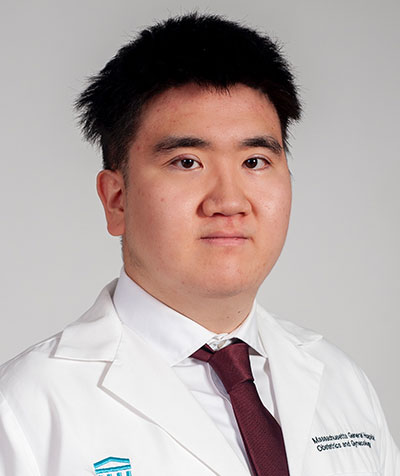Complete list of published work in MyBibliography
He C, Lv X, Huang C, Angeletti PC, Hua G, Dong J, Zhou J, Wang Z, Ma B, Chen X, Lambert PF, Rueda BR, Davis JS, Wang C. A Human Papillomavirus-Independent Cervical Cancer Animal Model Reveals Unconventional Mechanisms of Cervical Carcinogenesis. Cell Rep. 2019, 26(10):2636-2650.e5. doi: 10.1016/j.celrep.2019.02.004.
Lv X, He C, Huang C, Wang H, Hua G, Wang Z, Zhou J, Chen X, Ma B, Timm BK, Maclin V, Dong J, Rueda BR, Davis JS, Wang C. Timely expression and activation of YAP1 in granulosa cells is essential for ovarian follicle development. FASEB J. 2019, 33(9):10049-10064. doi: 10.1096/fj.201900179RR.
He C, Lv X, Huang C, Hua G, Ma B, Chen X, Angeletti PC, Dong J, Zhou J, Wang Z, Rueda BR, Davis JS, Wang C. YAP1-LATS2 feedback loop dictates senescent or malignant cell fate to maintain tissue homeostasis. EMBO Rep. 2019 Mar;20(3). pii: e44948. doi: 10.15252/embr.201744948.
Plewes MR, Hou X, Zhang P, Liang A, Hua G, Wood JR, Cupp AS, Lv X, Wang C, Davis JS. Yes-associated protein (YAP1) is required for proliferation and function of bovine granulosa cells in vitro. Biol Reprod. 2019, pii: ioz139. doi: 10.1093/biolre/ioz139
Lv X, He C, Huang C, Hua G, Wang Z, Remmenga SW, Rodabough KJ, Karpf, AR, Dong J, Davis JS, Wang C. G-1 inhibits breast cancer cell growth via targeting colchicine-binding site of tubulin to interfere with microtubule assembly. Mol Cancer Ther. 2017, 16(6):1080-1091. doi: 10.1158/1535-7163.MCT-16-0626.
Wang F, Xu C, Reece EA, Li X, Wu Y, Harman C, Yu J, Dong D, Wang C, Yang P, Zhong J, Yang P. Protein kinase C-alpha suppresses autophagy and induces neural tube defects via miR-129-2 in diabetic pregnancy. Nat Commun. 2017, 8:15182. doi: 10.1038/ncomms15182.
Hua G, Lv X, He C, Remmenga SW, Rodabough KJ, Dong J, Yang L, Lele SM, Yang P, Zhou J, Karst A, Drapkin RI, Davis JS and Wang C. YAP induces high-grade serous carcinoma in fallopian tube secretory epithelial cells. Oncogene, 2016, 35(17): 2247 - 2265.
Guohua Hua, Chunbo He, Xiangmin Lv, Lin Fan, Chen Wang, Steven W. Remmenga, Kerry J. Rodabaugh, Liguo Yang, Subodh M. Lele, Peixin Yang, Adam Karpf, John S. Davis, Wang C. The Four and a Half LIM Domains 2 (FHL2) Regulates Ovarian Granulosa Cell Tumor Progression via Controlling AKT1 Transcription. Cell death & Dis. 2016, 7:e2297. Doi: 10.1038/cddis.2016.207
He C, Mao D, Hua G, Lv X, Chen X, Angeletti PC, Dong J, Remmenga SW, Rodabough KJ, Zhou J, Lambert PF, Yang P, Davis JS, Wang C. The Hippo/YAP pathway interacts with EGFR signaling and HPV oncoproteins to regulate cervical cancer progression. EMBO Mol Med. 2015, 7: 1426-1449.
He C, Lv X, Hua GH, Lele SM, Remmenga S, Dong J, Davis JS, Wang C. YAP forms autocrine loops with the ERBB pathway to regulate ovarian cancer initiation and progression. Oncogene, 2015, 34:6040-6054.
Jiang C, Hou XY, Wang C, May JV, Butnev VY, Bousfield GR, Davis JS. Hypo-glycosylated hFSH has greater bioactivity than fully-glycosylated recombinant hFSH in human granulosa cells. J Clin Endocrinol Metab. 2015, 100: E852-860.
David Fu, Xiangmin Lv, Guohua Hua, Chunbo He, Jixin Dong, Subodh M Lele, David Wan-Cheng Li, Qiongli Zhai, John S Davis, and Wang C. YAP regulates cell proliferation, migration, and steroidogenesis in adult granulosa cell tumors. Endocr Relat Cancer. 2014, 21(2):297-310. (Cover article)

